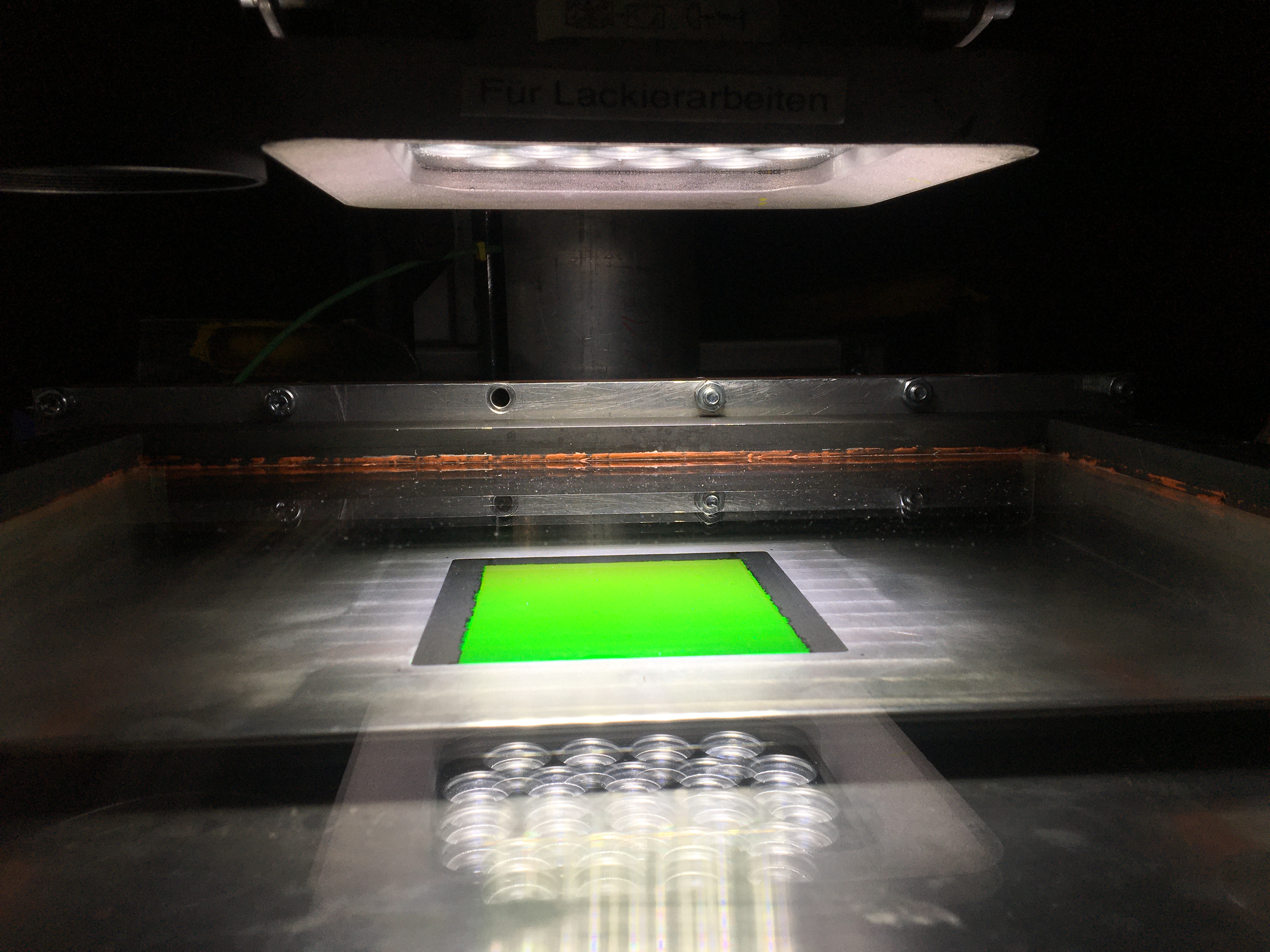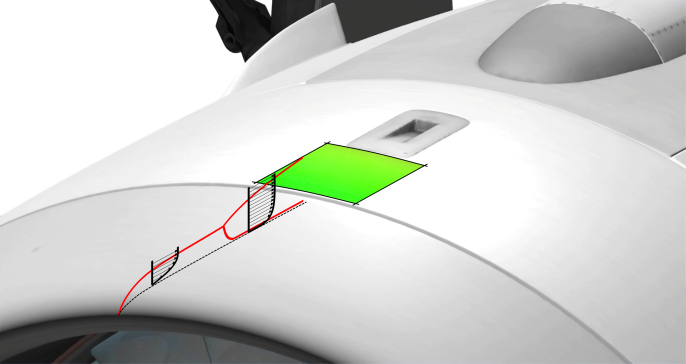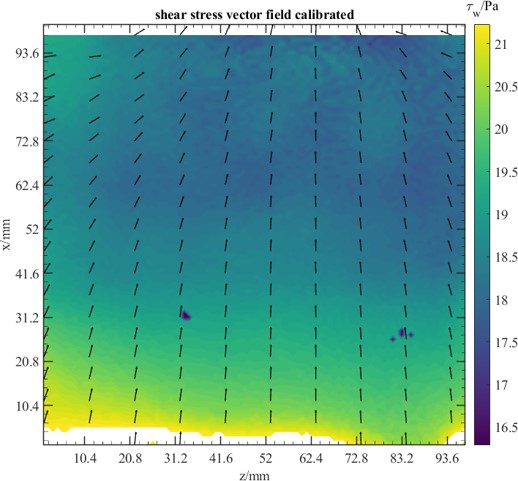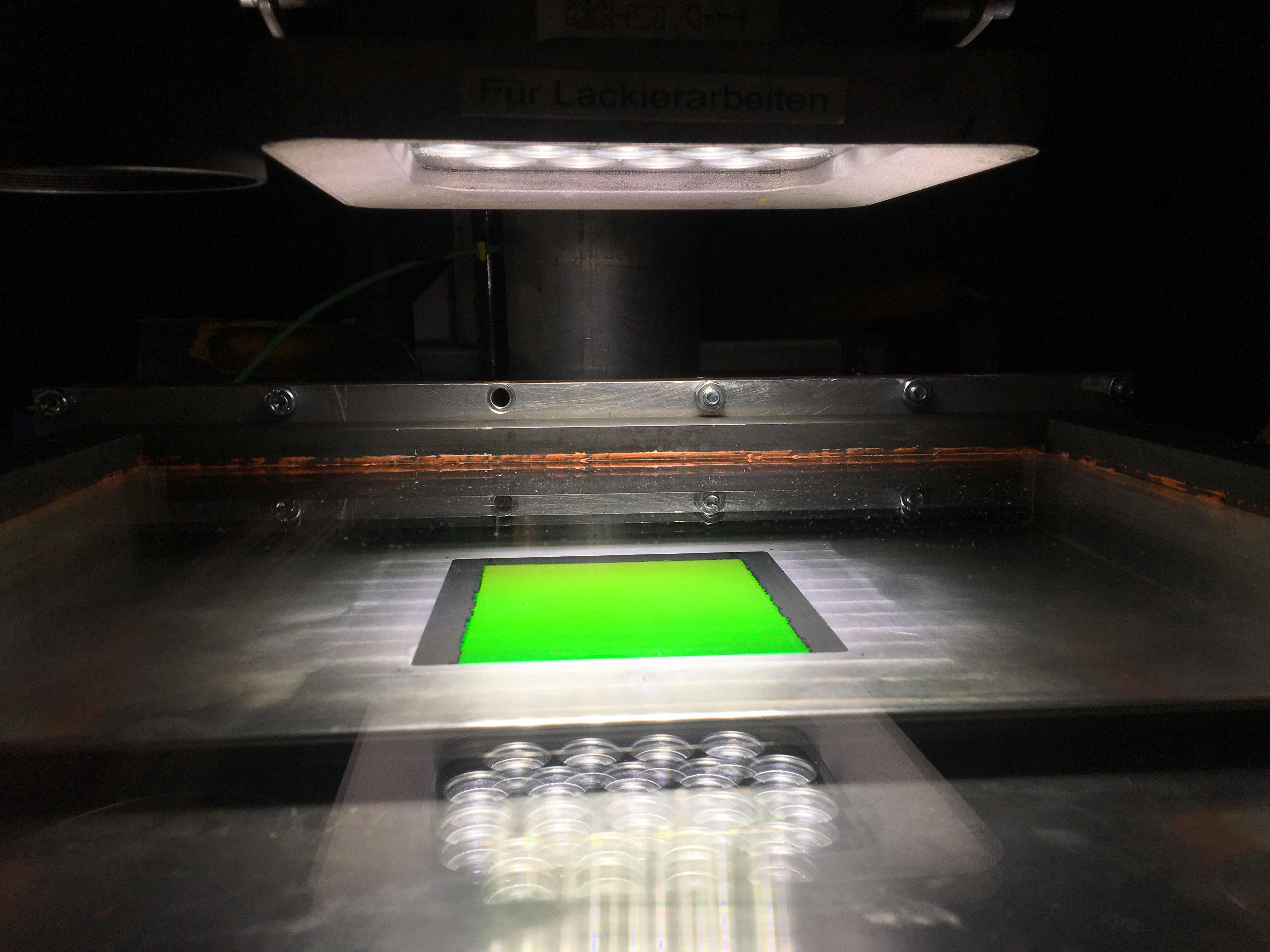
Wall shear stress measurement using liquid crystal technology
- Project Group:
Heat transfer and cooling methods.
Overview
Measuring the wall shear stress on a surface with air flowing over it is indispensable in many technical applications, e.g. in the area of reducing resistance and increasing performance in transportation vehicles, where viscous losses play a major role. In order to reduce these, it is crucial to understand the physical mechanisms and phenomena within the boundary layer.
Although Moore's law computing power is increasing and numerical computational tools are becoming more and more important, experimental data are indispensable for the calibration of model parameters of empirical/semiempirical correlations and of sub-models of numerical simulations. Therefore, a detailed knowledge of the core flow and its boundary layer is required. In particular, information on the magnitude and distribution of the shear stress on the component is essential for improving its aerodynamic design. Using liquid crystal measurement technology, this relevant experimental data can be provided for the first time. In Figure 1, areas can be found in which a three-dimensional boundary layer flow, three-dimensional separation as well as acceleration, deceleration, interacting vortices and transition form a complex secondary flow field that is omnipresent.

In order to be able to carry out quantitative measurements of wall shear stresses using the liquid crystal technique under realistic boundary conditions and on practical geometries, an extended understanding of the parameters influencing the color signal is required. In order to meet this requirement, the liquid crystal test rig presented by Melekidis et al. (2021) and located at the Institute of Thermal Fluid Machinery (ITS) is used. It guarantees well-defined and known aerodynamic and thermal boundary conditions. This makes it possible to quantitatively investigate the parameters influencing the measurement signal. The measuring insert painted with liquid crystals is shown in Figure 2.
Research objectives at the ITS
- Further development of reliable and precise measurement technology to determine quantitative flow parameters
- Correlation of local heat transfer measurements with aerodata using Reynolds analogy
- Data basis for the calibration of model parameters of empirical/semiempirical correlations and of partial models of numerical simulations
- Aerodynamic evaluation of flow-guiding components
Wall shear stress vector field from liquid crystal images
Figure 3 shows the quantitative distribution of the wall shear stress along the flow direction of a channel flow. The gradient of the wall shear stress decreases with increasing run length, i.e. with increasing boundary layer thickness. The color signal is laterally homogeneous downstream.

Sources and relevant publications
Melekidis, S.; Elfner, M.; Bauer, H. J.
2023. Measurement science and technology, 34 (1), Art.-Nr.: 015203. doi:10.1088/1361-6501/ac8f63
Melekidis, S.; Ebert, M.; Schmid, J.; Bauer, H.-J.
2022. 25th Conference of the International Society for Air Breathing Engines
Melekidis, S.; Elfner, M.; Bauer, H.-J.
2021. Proceedings of ASME Turbo Expo 2020 : Turbomachinery Technical Conference and Exposition, GT2020–14381, The American Society of Mechanical Engineers (ASME). doi:10.1115/GT2020-14381
Melekidis, S.
2022, July 5. Veranstaltungsreihe “Junge Talente - Wissenschaft und Musik” (2022), Eggenstein-Leopoldshafen, Germany, July 5, 2022


